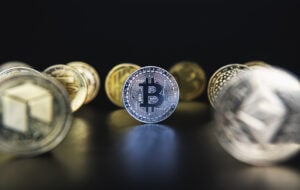
According to Forrester Research, “U.S. firms annually waste $1 trillion in underused intellectual property assets by failing to extract the full value of that property through partnerships.” This is based on a market of around 3 million patents in force in the US.
Extrapolate that figure out globally – where the World Intellectual Property Organization estimated that there were around 13.7 million patents in-force in 2017 – and the missed opportunity cost for companies (and economies) not leveraging their patents is almost incalculable.
Extracting value
When it comes to extracting value from intangible asset hard rights (eg. patents, trademarks, and design), many of the issues come down to companies not understanding how to properly leverage and value these assets.
A stark example of this can be seen in the Nortel bankruptcy filing in 2009. In this instance, Nortel filed for bankruptcy and its various business units and tangible assets were sold for $3.2 billion. The last assets to be sold were the company’s 6000 patents, which in a quirk of accounting rules were recorded on Nortel’s balance sheet at what they cost Nortel – $31 million. While the most frothy market estimate of their value was $1 billion, most analyst estimates were far south of this.
These assets were eventually sold for $4.5 billion – 145X the value recorded on the balance sheet and the patents ultimately were worth more than the value of the entire rest of the company. A great result for the company’s creditors, but you have to ask whether Nortel would have entered bankruptcy at all if its directors and management team had spent more time actively managing their portfolio of patents and trademarks…
Under accounting rules patents are typically listed at the cost to prosecute (file) them or the cost they were acquired for. The problem is, in the case of patents in particular, there is virtually no correlation between the cost of a patent and its value. A patent can turn on a single word (or court decision) and hence you can spend a small (or large) fortune filing for a patent and that “cost” will bear absolutely no relation to the actual value of that patent.
This is not to say it is impossible to value patents, just that cost-based methods are effectively irrelevant. Likewise, pure Income Methods such as Discounted Cashflow have significant drawbacks as well as they frequently fail to take into account critical value drivers such as the quality of the patent itself – this is understandable as few accountants have the requisite skills to read much less assess a patent.
While complex, there are methods of valuing patents. These methodologies will involve the assessment of a much broader range of factors than are generally included in traditional valuations. Things like the underlying quality, breadth, commercial application and record of the patent, as well contextual factors such as the leverage or benefit the patent(s) will deliver to different potential buyers, investors or partners.
While any valuation exercise needs to be grounded in some form of numerical analysis, it is critical that new qualitative methods are also adopted. Traditional income (DCF) and cost approaches risk becoming lost in the numbers and producing results that bear little resemblance to the reality of value. Instead, when valuing a patent or trademark, contextualization of the asset and the potential opportunities and risks become a core component of the value ascribed.
Recommended Reads
Free 1hr Consultation
Intangible assets are a company’s greatest source of hidden value and hidden risk. Make the valuable visible in your organisation.
Sign-up for a free 1-hour consultation today.




